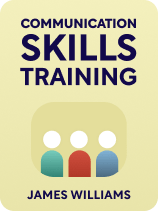

This article is an excerpt from the Shortform book guide to "Communication Skills Training" by James Williams. Shortform has the world's best summaries and analyses of books you should be reading.
Like this article? Sign up for a free trial here.
Do you tend to talk around your message rather than hit the nail on the head? Can you tell whether someone is tracking with you when you’re talking?
James Williams explains that expressing yourself accurately and clearly is crucial. If you don’t, the other person will likely misunderstand you, and you’ll fail to achieve your goal for the conversation. He offers three tips for staying clear and on point.
Read more to learn how to communicate clearly and get an accurate message across that’s likely to be understood.
Tip #1: Communicate About Important Topics Face-to-Face
Williams’s first bit of advice on how to communicate clearly seeks to recapture something we’ve lost in the digital age. He suggests holding important conversations face-to-face, not via text messaging, noting that misunderstandings are much more common in written communication like texts or emails. This is because you’re not able to pick up on nonverbal elements like tone, body language, and facial expressions, which are important to understanding the other person’s feelings and intent.
(Shortform note: The authors of Difficult Conversations reiterate that emotional topics are best discussed in person rather than over text-based messaging. However, they state that text conversations aren’t always avoidable–especially if the other person initiates one or insists upon one. They therefore provide a few tips for effective text-based conversation. For example, try to give the other person the benefit of the doubt and assume good intentions when reading their messages. If you get too emotional to do this, take a break and return to the message later. Further, to ensure the other person understands your messages, be as explicit as possible about your intentions, reasoning, and emotional state.)
Tip #2: Be Concise and Direct
Williams recommends using as few words as possible whenever you communicate—the fewer words you use, the less room there is for misinterpretation. Further, directly state what you want or need to make it easier for the other person to understand your message.
(Shortform note: While being direct and concise may ensure your message is understood, this terseness can sometimes be perceived as abrupt or rude. To avoid offending the other person while still being clear and direct, use “softeners,” such as “perhaps,” “maybe,” and “it might be worth considering.” For example, rather than saying, “We need to equally split the burden of chores. I want you to start unloading the dishwasher every other day,” say, “I’d like us to make chore distribution more equal. Would you consider unloading the dishwasher every other day?”)
Tip #3: Check for Understanding
Rather than assuming you and the other person understand each other, Williams says you must regularly check in by summarizing what’s happened in the discussion so far and ensuring the other person is on the same page.
(Shortform note: Experts reiterate the importance of checking in to clarify understanding, adding that in information-dense conversations, people tend to retain less than half of the information discussed. As a result, you should intentionally repeat important principles multiple times throughout the conversation to aid memory.)

———End of Preview———
Like what you just read? Read the rest of the world's best book summary and analysis of James Williams's "Communication Skills Training" at Shortform.
Here's what you'll find in our full Communication Skills Training summary:
- Why effective communication is one of the most important skills to have
- How to develop your communication skills through intentional practice
- Why emotional control is central to expressing yourself effectively






